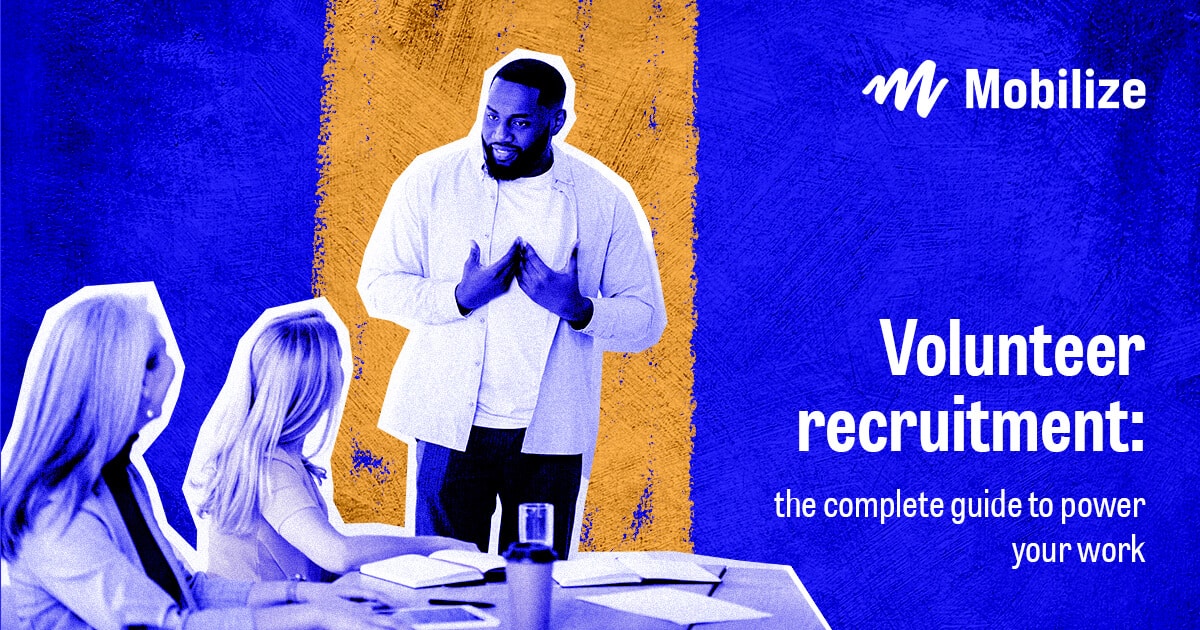

Best Practices
Best Practices
Tips and examples for hosting in-person events while prioritizing safety.

As stay-at-home orders are lifted across the country, an increasing number of organizations are beginning to think about the transition back to in-person events. Across industries, a major question has been: “How do we get back on the ground safely in the middle of a pandemic?” While COVID-19 continues to rapidly spread throughout the United States, organizers must look at their circumstances and critically analyze whether or not in-person events are feasible and safe. The utmost priority is slowing the spread of COVID-19, making it unlikely that many organizations will be able to host in-person events the way they used to if at all. If organizers choose to host events in-person, there are precautions that your organization must take to prioritize the safety and wellbeing of your volunteers.
Unsure about how you and your organization can mobilize while slowing the spread? Here are our tips:
By requiring that volunteers keep their masks on during the event, you create a safer environment for your event attendees. Organizers can also require gloves and/or provide volunteers with hand sanitizer and masks. Masks have effectively proven to be the best action individuals can take to slow the spread while in public. Requiring them is the best step to take in planning an in-person event.
Helping Hands volunteers prepared and delivered food kits to senior citizens in Los Angeles. Masks and gloves were essential during this distribution since attendees were interacting with people who are at higher risk for severe illness from COVID-19.
One of the first steps to safely hosting an event is social distancing. Large open spaces such as parks and parking lots allow volunteers to maintain a physical distance of six feet from one another. Organizations can also draw circles or place markers to ensure that volunteers know the proper distance to be apart from one another.
Pennsylvania Stands Up hosted this Juneteenth event to stand together as a community against racism and injustice. Volunteers met in a parking lot with plenty of space to practice safe social distancing.
By staggering signup times for volunteers, attendees will arrive in waves. This will prevent the event from becoming overcrowded and potentially reduce the chance of exposure. Event planners can stagger the schedule by creating multiple shifts and limiting how many users can sign up for each time slot.
This event invited volunteers to personally collect petition signatures for the Invest in Education Petition. Attendees were required to wear masks and bring their own pens to the event. They were encouraged to sign up for time slots beforehandto prevent overcrowding.
Invite volunteers to host smaller events on behalf of your organization. Empower your volunteers by sending them resources and supplies that will benefit the event’s purpose. For example, if your volunteers are interested in hosting phone banking events, you can provide call scripts or frequently asked questions sheets to help guide their efforts.
A creative way to host an in-person event is to encourage volunteers to use social media to connect with one another virtually. By using the same hashtag and performing tasks in unison, attendees can harness unity that creates community beyond the screen. Events like these are easy to manage because volunteers are working independently but towards a collective goal.
The best example of a separate, yet connected, event is Action PAC’s Run with Maud. In honor of Ahmaud Arbery, who was shot and killed while on a run, thousands of participants ran 2.23 miles. Celebrities, families, and people from all walks of life documented their runs using #RunWithMaud. Volunteers were instructed to follow social distancing policies on their runs and to wear masks. This powerful event was hosted separately around the world but was still a powerful display of solidarity and a catalyst in the resurgence of the Black Lives Matter movement.

Best Practices

Best Practices

Best Practices